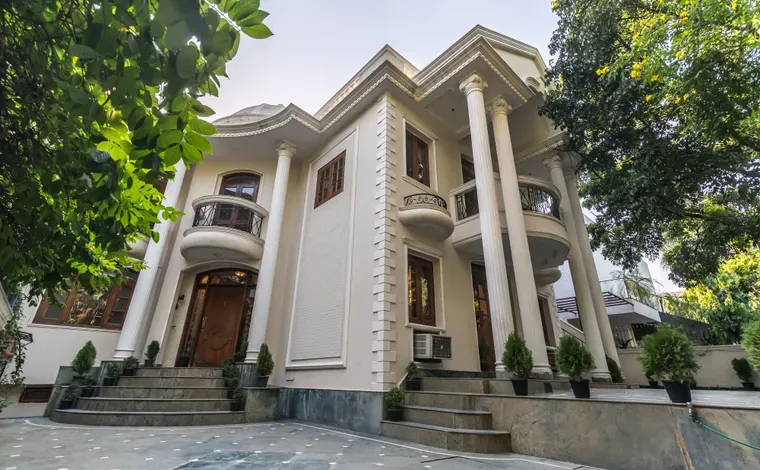The luxury real estate market, often characterized by opulence, exclusivity, and a high price tag, has long been seen as the domain of the wealthy elite. However, a significant shift is occurring in this sector, driven by changing economic conditions, market dynamics, and consumer preferences. High-end properties, once considered unattainable for the average buyer, are now becoming more accessible. This blog explores the metrics driving the affordability of high-end properties and what this means for potential buyers.
Changing Market Dynamics
One of the primary factors contributing to the increased affordability of high-end properties is the evolving dynamics of the real estate market. In many cities, there has been an oversupply of luxury homes, leading to price corrections. Developers, eager to move inventory, are offering attractive deals, discounts, and flexible payment options, making it possible for a broader segment of buyers to consider high-end properties.
For example, in cities like Mumbai, Delhi, and Bangalore, where the luxury real estate market was once booming, there is now a noticeable correction. According to recent data, prices in some high-end segments have seen a drop of up to 20%, making these properties more affordable to buyers who were previously priced out of the market.
Favorable Economic Conditions
Economic conditions, such as low interest rates and stable inflation, have also played a crucial role in enhancing the affordability of luxury properties. Lower borrowing costs have reduced the monthly outgoings for mortgage payments, enabling buyers to afford more expensive homes without a proportionate increase in their financial burden.
In countries like India, where the Reserve Bank has kept interest rates low to stimulate economic growth, home loans have become more affordable. This has opened up the luxury property market to middle-income earners who previously found it difficult to qualify for loans on high-end properties.
Rise of Affordable Luxury
The concept of affordable luxury is gaining traction among developers who are responding to the demand for high-end features at a more reasonable price point. Properties in this segment offer the best of both worlds: luxurious amenities, prime locations, and modern designs, all without the exorbitant price tags typically associated with traditional luxury homes.
Affordable luxury properties are often found in emerging neighborhoods, where land and development costs are lower. These areas, though not as centrally located as premium districts, offer excellent connectivity, infrastructure, and future appreciation potential. Developers in cities like Pune and Hyderabad are increasingly focusing on this segment, providing high-end features such as swimming pools, landscaped gardens, and smart home technologies, all within a more affordable price range.
Technological Advancements
Technology has revolutionized the real estate industry, making it easier for buyers to find and purchase high-end properties at more affordable rates. Online platforms and real estate marketplaces provide comprehensive listings, virtual tours, and detailed information on pricing trends, allowing buyers to compare options and make informed decisions.
Moreover, advancements in construction technology have reduced the costs associated with building high-end homes. Prefabrication, 3D printing, and other modern construction techniques have lowered the overall expenses of developing luxury properties, and these savings are often passed on to the buyers.
Government Incentives and Policies
Government initiatives aimed at promoting home ownership have also contributed to the increased affordability of high-end properties. In many countries, including India, policies such as reduced stamp duty, tax incentives for first-time homebuyers, and subsidies for affordable housing have made it easier for individuals to invest in luxury real estate.
For instance, the Indian government’s push for affordable housing has led to several tax breaks and incentives for developers, who are now focusing on creating luxury homes that meet the affordability criteria. These incentives are helping bridge the gap between demand and supply in the high-end segment, making luxury homes more accessible.
Changing Consumer Preferences
The modern homebuyer is more value-conscious than ever before. Today’s buyers are looking for properties that offer a combination of luxury and affordability. They prioritize features such as sustainability, smart home technology, and community living, but they are also mindful of the costs associated with such properties.
Developers are responding to these changing preferences by offering high-end properties that align with the buyers’ values and financial capabilities. For example, eco-friendly luxury homes, which offer sustainable living without compromising on luxury, are becoming increasingly popular. These homes, though high-end, are designed to be energy-efficient, reducing long-term costs for homeowners and making them a more affordable option in the luxury market.
The Impact of Global Events
Global events, such as the COVID-19 pandemic, have also influenced the affordability of high-end properties. The pandemic led to economic uncertainty, causing a slowdown in the luxury real estate market. As a result, developers were compelled to offer discounts and incentives to attract buyers, leading to a temporary but significant increase in affordability.
Moreover, the shift towards remote work has made location less critical for many buyers, allowing them to consider high-end properties in less expensive areas. This has broadened the market for luxury homes, with buyers now able to purchase high-end properties in suburban or even rural locations, where prices are generally lower than in urban centres.
The landscape of high-end real estate is transforming, with affordability becoming a key factor in the market. Changing market dynamics, favorable economic conditions, the rise of affordable luxury, technological advancements, government incentives, shifting consumer preferences, and the impact of global events are all contributing to this trend.
For potential buyers, this is an opportune time to explore high-end properties that were once out of reach. With careful consideration of the market, economic conditions, and personal financial situation, purchasing a luxury home can now be a realistic and rewarding investment. The era of high-end affordability is here, offering a unique opportunity for a broader range of buyers to experience luxury living.
